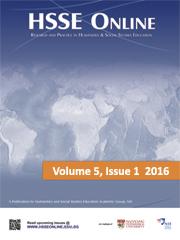Suhaimi Afandi (National Institute of Education, Singapore)
Rozanah Basrun (Tanjong Katong Secondary School, Singapore)
Nani Rahayu Mohamed (Tanjong Katong Secondary School, Singapore)
Liz Sriyanti Jamaluddin (Tanjong Katong Secondary School, Singapore)
Sya Feena (Tanjong Katong Secondary School, Singapore)
Nur Hazelin Idayu (Tanjong Katong Secondary School, Singapore)
Keywords
History
Junior College
Secondary School
Abstract
This paper reports the experiences of the History Unit at Tanjong Katong Secondary School (TKSS) in their attempts to craft a discipline-based curriculum model focusing on instruction that develops students’ historical understandings. The paper describes the project structure and development of the Tanjong Katong (TK) Teaching for Historical Understanding (TfHU) approach to historical instruction, shares some reflections by teacher participants involved in the project, and highlights several learning points and implications for curriculum change at TKSS. The history teachers at TKSS recognised that the TfHU project had further developed their awareness of more effective methods to teach history, and were confident that the focus on disciplinary understandings will enhance student engagement in their history classrooms. They demonstrated strong belief that students can be made to understand complex issues in history if they are given the proper tools or cognitive challenges suitably crafted to develop deeper thinking about aspects of the discipline.
Introduction
Recent efforts to address apparent shortcomings in the teaching and learning of history in schools have seen remarkable changes in the way the national history curriculum has been conceived. Across all age and academic levels (lower secondary, upper secondary and post-secondary) history instruction has shifted towards an approach that is inquiry-based, and one that focuses on the development of students’ historical understanding (MOE, 2012). At its best, a curriculum that uses historical inquiry as a pedagogical framework, supports it with ample opportunities for students to engage in rich tasks that are structured to develop disciplinary ideas about history, and provides teachers with interventionist strategies or scaffolds to help manage students’ preconceptions is more likely to develop deeper historical understandings among its learners. Designing a framework for curriculum development with progression in mind would serve not only as a focal point for thinking about ways to improve students’ ideas about history, but also offer opportunities for formative assessment strategies that are targeted at moving students’ ideas forward. Yet, how far have schools embraced the idea of history education as one that deepens students’ ideas and understandings about the historical discipline? To what extent has inquiry been successful in fostering students’ thinking and understanding in history? Has historical instruction in local classrooms changed in a way that has seen a shift from content aggregation and accumulation to one that focuses on providing students with opportunities to develop disciplinary practices and conceptual understandings? These are important questions that require addressing, but ones that may not be sufficiently tackled within the scope of the current paper. Instead, this paper reports the experiences of the History Unit at Tanjong Katong Secondary School (TKSS) and their attempts to craft a discipline-based curriculum model that placed focus on instruction that develops students’ historical understandings. The paper describes the project structure and development of the Tanjong Katong (TK) Teaching for Historical Understanding (TfHU) approach to historical instruction, shares some reflections by teacher participants who went through the process of undertaking to teach for understanding, and highlights several learning points and implications for curriculum change at TKSS.


